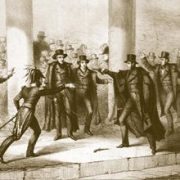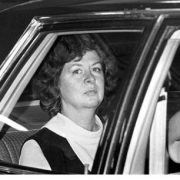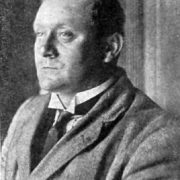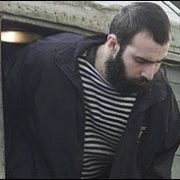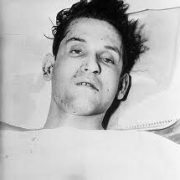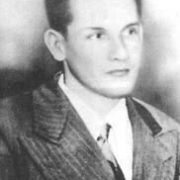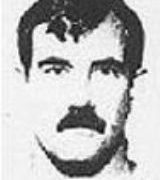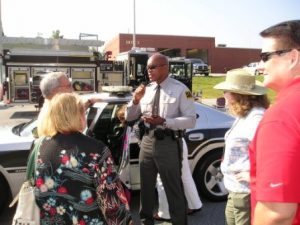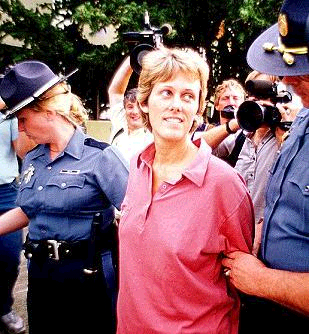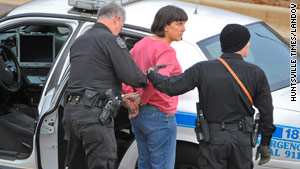We know a great deal about the successful assassinations of American presidents, political leaders and other public figures, but what about those assassinations that failed? There have been several close calls during assassination attempts, leaving the target badly wounded, slightly injured or even completely unharmed. With every failed assassination, we see how quickly lives can be taken away and how dangerous it is to be in the public eye. Here are the 10 most infamous failed assassins:
1. Claus von Stauffenberg was famously known for trying to assassinate Adolf Hitler on July 20, 1944, in what was known as Operation Valkyrie. The German army officer was the driving force behind the plot to kill Hitler and remove the Nazi Party from power. On July 20, 1944, Stauffenberg entered the Fuhrer’s office carrying a briefcase that contained two bombs. He left the room to arm the first bomb and returned to the briefing room, leaving the briefcase under the table near Hitler. Stauffenberg excused himself again and left the room when the bomb exploded. He was convinced that no one could have survived, but Hitler survived practically unscathed. The bomb killed four people and injured others. Stauffenberg and his co-conspirator, Haeften, fled to a nearby airfield. It wasn’t long after the failed assassination attempt when the two were tracked down and captured during a shoot out. Stauffenberg was executed by a firing squad.
2.Arthur Bremer attempted to kill George Wallace while he was campaigning for democratic presidential primary in Laurel, Maryland, on May 15, 1972. Bremer shot Wallace five times with one bullet hitting his spinal column, which caused him to be paralyzed from the waist down. Wallace was confined to a wheelchair the rest of his life. Bremer’s motive to kill Wallace was fueled by a desire for fame and to be the greatest assassin, as noted in his diary. President Nixon was an earlier target for Bremer. He was convicted of attempted murder and was sentenced to 53 years in prison, but Bremer sought parole after 35 years and was released in November 2007.
3. Richard Lawrence was the first known person to try to assassinate an American president. Lawrence sought to kill President Andrew Jackson inside the Capitol Rotunda in January 1835. The English-born house painter fired at Jackson, but the powder failed to ignite and the bullet did not eject. He fired a second time but it did nothing again. Jackson lunged at Lawrence with his cane, but the shooter was pulled down to the ground by a young army officer who was nearby. Lawrence claimed that he was an heir to the British throne and Jackson stood in his way. He was arrested and found not guilty by reason of insanity. Lawrence was sentenced to a mental institution for the remainder of his life.
4. John Hinckley Jr. tried to assassin President Ronald Reagan on March 30, 1981, in an attempt to win the attention of actress Jodie Foster. Hinkley was successful in shooting Reagan, hitting him under the left arm and puncturing his lung. In a matter of three seconds, Hinkley shot Reagan, a police officer, a Secret Service agent, and seriously wounded Press Secretary James Brady. Hinckley was playing out the role of Travis Bickle, a fictional character from the movie Taxi Driver, in which Bickle protects a 12-year-old prostitute played by Jodie Foster, and he kills her pimp so that he can be portrayed as a hero to her and the media. Hinckley was obsessed with Bickle’s character and wanted to act out his rescue of Foster in real life. In the 1982 trial, Hinckley was found not-guilty by reason of insanity.
5. Sara Jane Moore tried to assassinate President Gerald Ford on Sept. 22, 1975, by shooting at him while standing in a crowd outside the St. Francis Hotel in San Francisco. Moore fired one single shot at Ford while standing about 40 feet away from him and just barely missed his head by a couple inches. When she raised her arm to shoot again, Oliver Sipple, a US Marine, dove toward her, knocked her arm away and pulled her to the ground. Ford was not shot, but a bystander was injured when the bullet ricocheted off the hotel entrance. At the time of the shooting, Moore had been working as a bookkeeper for P.I.N., a charitable organization, and was an FBI informant. She pleaded guilty and was sentenced to life in prison, but was released in December 2007 after serving 32 years of her life sentence.
6. John F. Schrank tried to assassinate President Theodore Roosevelt on Oct. 14, 1912 in Milwaukee, Wisconsin, during a presidential election campaign. Schrank attacked Roosevelt as he was leaving the Gilpatrick Hotel and shot him. The bullet went into his chest after hitting his steel eyeglass case and a copy of his speech that was in his jacket. Despite suggestions, Roosevelt refused to go to the hospital because he wasn’t coughing up blood and decided to deliver his speech as planned. Roosevelt showed great strength when he spoke for 90 minutes and addressed the crowd with all of his might. Doctors later determined that because he was not seriously wounded, it would be more risky to try to remove the bullet than leave it. Roosevelt had the bullet in his chest until the day he died. Schrank’s motive to kill Roosevelt remains unclear, but he was strongly against a sitting President serving a third term in office. Doctors declared that Schrank was insane, and he was sentenced to a mental hospital for the rest of his life.
7. Vladimir Arutyunian tried to assassinate President George W. Bush and Georgian President Mikheil Saakashvili on May 10, 2005, when he threw a hand grenade toward the podium where Bush was speaking. The Soviet-made RGD-5 hand grenade was wrapped in a red plaid handkerchief and landed about 100 feet from the podium. The hand grenade failed to detonate because of a malfunction. A Georgian security officer removed the grenade, but Arutyunian disappeared. After the incident, FBI agents were able to identify a suspect from photographs taken during the speech. When they raided Arutyunian’s home trying to arrest him, a gunfight broke out and he killed Zurab Kvlividze, the head of the Interior Ministry’s counterintelligence department. He was wounded and captured by Georgian Special Forces, and admitted on television that he had thrown the grenade. The Georgian man hated the country’s new government and was not regretful of his actions. Arutyunian was found guilty of terrorism, attempted assassination, treason and murdering a police officer.
8. Oscar Collazo and Griselio Torresola tried to assassinate President Harry S. Truman on Nov. 1, 1950, in hopes of calling attention to Puerto Rico and advancing Puerto Rican independence. The two Puerto Rican nationalists prepared to attack Truman at the Blair House where the family was staying during White House renovations. Collazo and Torresola planned to surround the house and shoot Truman inside. Instead, the men got into a gunfight with White House policemen and Secret Service agents outside, but never made it inside the house. Three policemen were wounded, but one of them shot at Torresola and hit him on the side of the head, killing him. Truman was taking a nap inside the house when he heard the shootings and ran to the window to see Collazo on the front steps. He was ordered to get down by a White House guard. Collazo was originally sentenced to death, but Truman reduced the penalty to life imprisonment, which was later commuted by President Carter.
9. Mehmet Ali Agca tried to assassinate Pope John Paul II on May 13, 1981, after escaping from a Turkish prison in which he was sentenced to for murdering Turkish journalist Abdi Ipekci. Agca shot the pope and wounded him in the abdomen, left hand and right arm. Although he has never explained his motives, there have been claims made that the K.G.B. and Bulgarian intelligence were involved. Agca was linked to the Turkish ultranationalist group, called the Grey Wolves. Agca was sentenced to 19 years for attempted murder and served his time in Italian prisons, but finished his 10-year term in Turkey for murdering Ipekci. He was released from prison in January 2010.
10. Frank Eugene Corder tried to kill President Bill Clinton and his family by flying a stolen single-engine Cessna into the White House lawn on Sept. 12, 1994. Corder was trying to hit the White House, but the plane’s power shut off and crashed through the branches of a magnolia tree, killing him. The Clintons were not at home and were staying across the street at the Blair House while the White House was undergoing repairs. Corder was a 38-year-old truck driver from Maryland, who had been suffering from alcoholism, financial problems, a drug conviction and a broken marriage. One of Corder’s friends said that he had once talked about flying a plane into the White House as a suicide mission, but Corder’s intent is still uncertain to law enforcement.
* Today’s article courtesy of our good friends at Onlinedegree.net.
* * *
Writers’ Police Academy
Registration for the 2011 Writers’ Police Academy is now open. You do not want to miss this one of a kind event!
Writers’ Police Academy
Guilford Technical Community College and Public Safety Training Academy
Jamestown, N.C.
September 23-25, 2011
* * *
We’ve just added some new workshops and experts to the lineup!
Cold Case Investigations
Bloodstain Pattern Investigations
3D Laser Scanning
(experts show you how it’s done in the field using actual equipment)
How about tours of the local jail?
Ride-a-longs with sheriff’s deputies?
Have we got some surprises in store for you!




